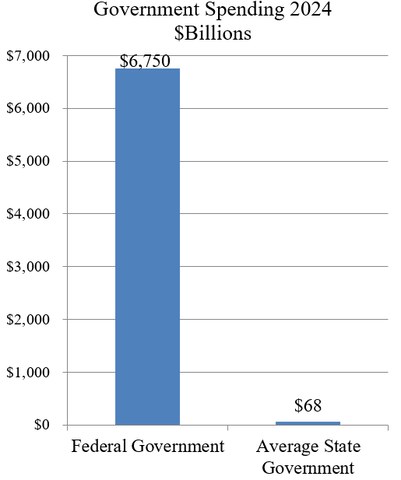Given the steep population decline Puerto Rico has experienced, policymakers should reconsider whether remaining residents can continue to support 78 separate municipios. Consolidating some of these governments could result in more efficient service provision and reduced administrative overhead.
Puerto Rico’s population has declined 15% since the 2000 Census, but the rate of population change has varied widely across municipios. Seven municipios registered population increases between 2000 and 2021, while twenty suffered declines of 20% or more.
Smaller municipios that have experienced proportionally large population declines are especially prone to service insolvency, a condition under which the government continues to pay its bills but lacks the ability to provide public services at the level residents might reasonably expect.
The municipio that suffered the largest population decline since 2000 is Guánica—on the island’s southern coast, 45km west of the city of Ponce. Its 2022 population of 12,800 is down 41.5% since the century began. Aside from the challenges faced by other southern coastal communities hard hit by hurricanes and earthquakes in recent years, Guánica is also struggling with chemical contamination in and around its bay.
The municipal government appears to lack the capacity to provide adequate public services under these difficult conditions. According to its latest available federal Single Audit, 65% of Guánica’s spending was devoted to general administration, dwarfing the amounts spent on public safety, public works, and health and welfare, which together accounted for only 10% of total spending.
The Single Audit for the fiscal year ended June 30, 2020, shows that Guánica is heavily indebted and in fiscal distress. Long‐term liabilities amounted to over $1100 per resident, and the muncipio’s general fund has a negative balance. Guánica’s balance sheet is likely worse than reported because damage to Guánica ‘s capital assets from hurricanes and earthquakes had not been assessed. This issue caused Guánica’s auditor to issue a “adverse” opinion, meaning that its financial statements cannot be relied upon to determine the municipio’s true financial condition. The fact that Guánica’s fiscal year 2021 financial statements are not yet available is another indication of its financial challenges.
With all that in mind, it is worth noting that Guánica and other struggling municipios may show better financial results in fiscal year 2022 due to the American Rescue Plan Act, which provided $1.5 billion in aid to Puerto Rico’s local governments. But that is a one‐time windfall that cannot resolve long‐term financial issues.
Although Puerto Rico’s Financial Oversight and Management Board (FOMB) has noted issues with municipio performance, it has stopped short of advocating consolidation. In a recent essay, FOMB Research Director Arnaldo Cruz identified a variety of problems afflicting municipal governments, including failure to meet budgetary revenue targets, borrowing to cover operational expenses, inability to complete capital projects, and procurement irregularities.
Cruz recommended regionalizing individual government services. For example, several municipios could participate in one regional authority that would provide public works services. These regional service providers would be similar to the Joint Powers Authorities that operate in California and some other states.
Although regional service providers could reduce municipal expenditures through economies of scale, they would not address the administrative bureaucracy that manages each municipio. It is only through full consolidation that redundant mayors, municipal legislatures, and support staff can be addressed.
Another challenge to regionalization of the kind recommended by the Oversight Board is lack of take‐up. In 2020, the Oversight Board announced a Municipal Consolidation Fund for the purpose of providing one‐time grants to municipios that voluntarily participate in service consolidations. But, according to a recent Commonwealth fiscal plan, the Oversight Board’s Municipal Consolidation Fund had yet to make any grants as of April 2023, despite the Board earmarking $22 million annually for this fund.
From a political standpoint, combining municipio governments is undoubtedly a heavy lift. Mayors, municipal legislators, staff, and suppliers all have an interest in protecting existing bureaucracies and know how to affect the policy debate. Regular Puerto Rico citizens and federal taxpayers who bear the costs of duplicative government structures, individually, pay too little for this inefficiency to be a salient issue. If Puerto Rico is to gain the benefits of municipal consolidation, good government advocates will have to push the idea forward.




